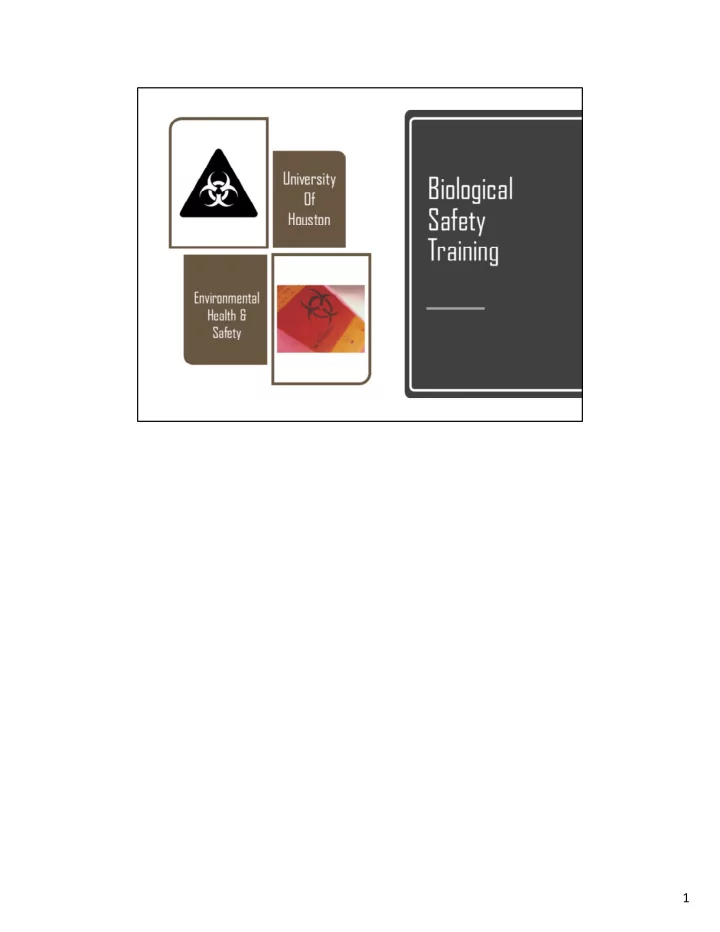

1
2
3
4
5
1. Including procedures describing potential biohazards and appropriate precautions provided in the form of standard operation procedures (SOP) 2. Including the necessary precautions to prevent exposures, incident reporting and exposure evaluation procedures 6
7
• The minimum required protective clothing can be found on the laboratory door sign. 8
9
10
11
• The minimum required protective clothing can be found on the laboratory door sign. 12
Although the biosafety level may correlate with the risk group of the agent, they • do not necessarily equate. This is because the procedures used in the laboratory with the agent may • require greater precautions. For example, the use of a cell sorter which pose a risk of aerosol production. Each level has specific controls for containment of microbes and biological • agents. Biosafety level of your laboratory will be discussed in detail by your • P.I./supervisor during the laboratory Specific Training. Containment is achieved by a combination of laboratory practices and • techniques, safety equipment, and facility considerations. Biosafety level of your laboratory will be discussed in detail by your • P.I./supervisor during the laboratory Specific Training. 13
14
15
16
17
18
19
20
21
22
23
Human cell lines are applicable to the bloodborne pathogens standard and must be handled as potential biohazards. 24
New treatment for HIV includes: PrEP ‐ HIV medicine taken daily to lower the risk of contracting the virus and… PE ‐ HIV medicine, taken within 72 hours of after possible exposure, to prevent infection. HIV does not survive long outside the human body (such as on surfaces), and it cannot reproduce outside a human host. 25
Hepatitis B virus is not spread through food or water, sharing eating utensils, breastfeeding, hugging, kissing, hand holding, coughing, or sneezing. 26
The hepatitis B vaccine works by stimulating your natural immune system to protect against the hepatitis B virus. After the vaccine is given, your body makes antibodies that protect you against the virus. 27
Vaccinia virus (VACV) is an orthopoxvirus used in smallpox vaccines, as a vector for novel cancer treatments, and for experimental vaccine research. 28
29
30
• Using mechanical means to handle contaminated sharps to eliminated hand-to-hand passing of sharp instruments. 31
32
33
34
35
36
37
38
39
40
41
42
43
Recommend
More recommend